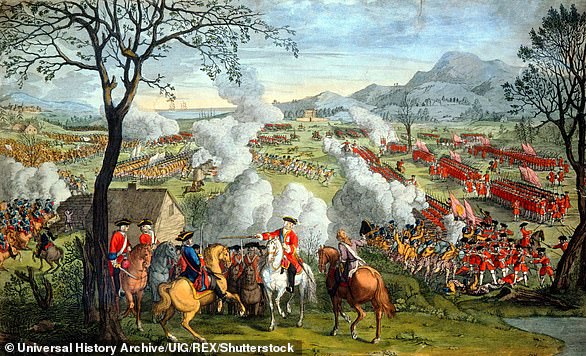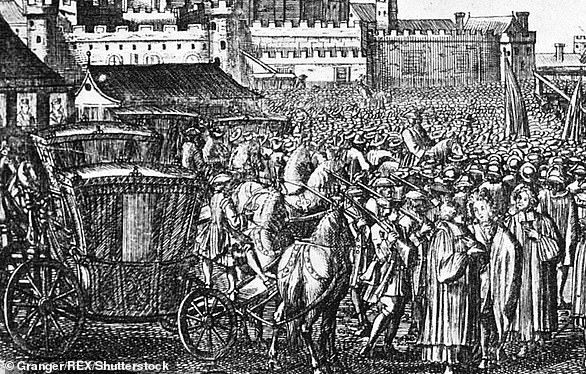Bonnie Prince Charlie narrowly escaped an assassination attempt in 1746, researchers say after discovering a musket ball hole in his bedroom wall
Nearly 300 years ago, he risked his life attempting to overthrow the British king.
But Bonnie Prince Charlie – the grandson of James II – narrowly survived an assassination attempt in January 1746, researchers say.
Experts found a 21mm-wide musket ball hole in the wall of his bedroom at Bannockburn House, near Stirling, Scotland.
The musket, an early type of long-barreled rifle, was fired by an unknown assailant – possibly an ally of Britain’s King George II.
Bonnie Prince Charlie led the Jacobite rising of 1745, the failed attempt to restore his father, James Stuart, to the British throne.
Prince Charles Edward Stuart – known as Bonnie Prince Charlie – was the grandson of the deposed Catholic King James VII of Scotland and II of England
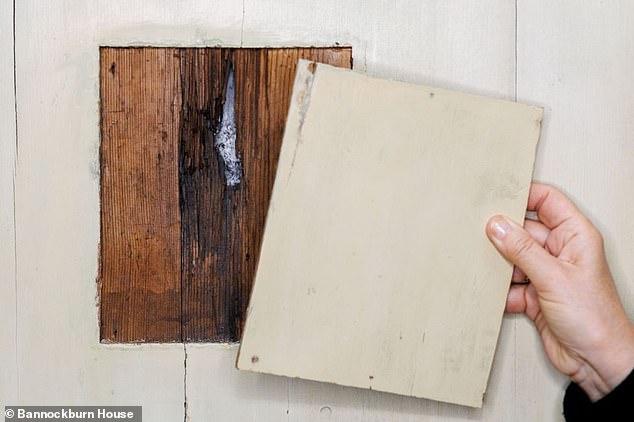
A musket ball hole (pictured) has been discovered between the delicate plasterwork and old wooden panelling – evidence of the assassination attempt, experts say
“This astonishing discovery at Bannockburn House sheds new light on the story of Bonnie Prince Charlie and on one of the most tumultuous episodes in Scottish and British history,” said Stirling City Councillor Chris Kane.
Prince Charles Edward Stuart (1720–1788), also known as ‘the Young Pretender’, was the grandson of the deposed Catholic King James VII of Scotland (and II of England).
In 1745, ‘Bonnie Prince Charlie’ led the Jacobite Rising, an attempt to restore his family to the British throne and overthrow King George II.
In December 1745 his forces withdrew to Scotland and Bonnie Prince Charlie fell ill and was taken to Bannockburn House to recover.
He was cared for by his host Sir Hugh Paterson’s young niece, Clementine Walkinshaw, and a romance developed between the two.
He stayed in a large bedroom on the first floor of the west wing, the scene of the assassination attempt.
In January 1746, an unknown assassin fired a musket through a bedroom window, missing Bonnie Prince Charlie as he slept, according to investigators.
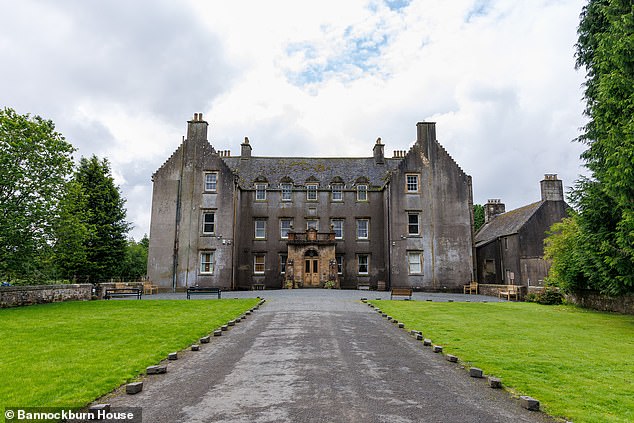
Bannockburn House is a 17th-century A-listed mansion, largely unaltered apart from Victorian alterations including a rear extension. The original part of the house was completed around 1675, although it is thought to have been built on an earlier building called Drummonds’ Hall

This is the first-floor bedroom at Bannockburn House where Bonnie Prince Charlie slept as the attacker aimed a musket through the window, experts say
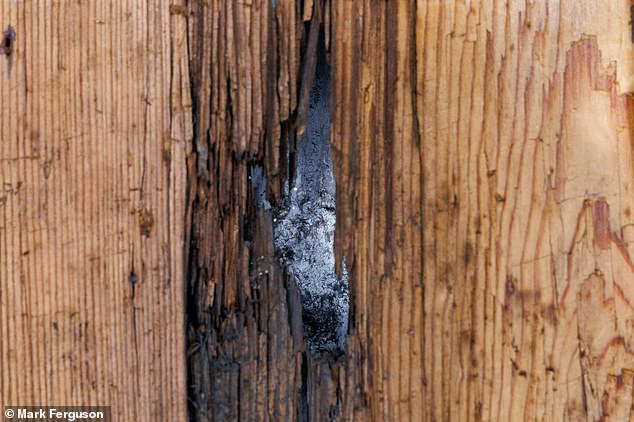
The musket ball went through the wainscoting, making a crater in the plaster and stone behind it
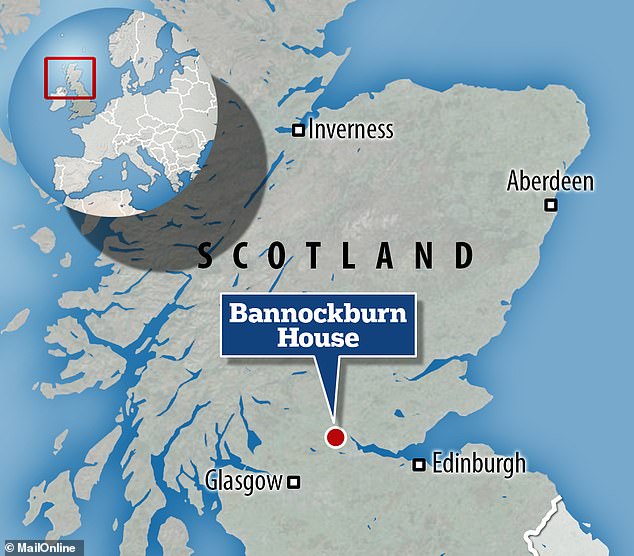
Bannockburn House is a Grade A listed building in the town of Bannockburn, near Stirling, Scotland
For centuries, the existence of this musket ball hole remained a fascinating legend passed down from generation to generation. Its location remained shrouded in mystery.
Volunteers had been searching for the hole for years, but a “crucial tip” came from an 89-year-old man whose aunt worked as a servant in the house.
The man told investigators that his aunt had proudly provided the bullet hole in the room in the 1950s.
Finally, in April of this year, the hole was found beneath a painted wainscoting installed in the room in the 1880s, opposite a window.
“It was a thrilling moment when I opened it,” said Catherine Bradley, principal investigator at Bannockburn House.
‘I carefully lifted the panel and saw the split wood. I knew we had found something very special.’
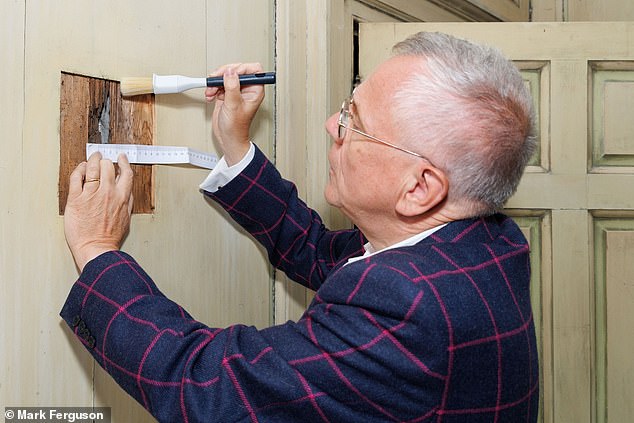
Professor Murray Pittock from the University of Glasgow with the hole, which is just 2.1cm (0.8in) wide
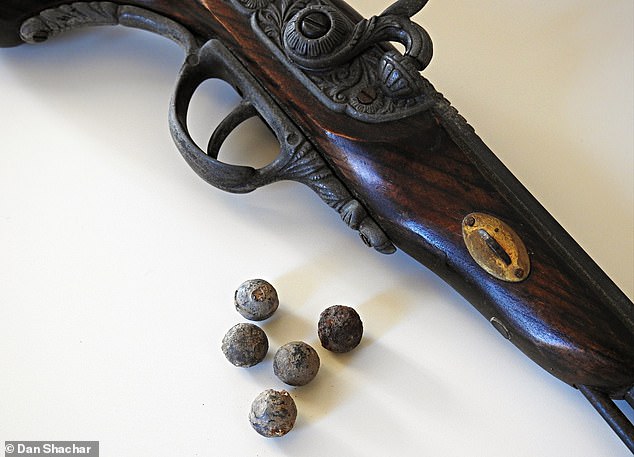
The attempt on Charlie’s life was made with a musket, an early type of long-barreled rifle (file photo)
The team was assisted by leading Jacobite historian Professor Murray Pittock of the University of Glasgow and archaeologist Dr Murray Cook of the Council of Stirling who ‘confirmed the authenticity of the find’, a statement said.
However, Professor Pittock told MailOnline that the existence of the hole is ‘not proof but confirmation’, so they cannot completely rule out the possibility that the hole was created by a different event.
The announcement comes on the 279th anniversary of Bonnie Prince Charlie’s arrival on Scottish soil to attempt to reclaim the thrones of England, Scotland and Ireland on behalf of his father, James Stuart (1688-1766).
James Stuart was Prince of Wales from July 1688 until, just months after his birth, when his Catholic father (James VII and II) was deposed and exiled during the Glorious Revolution of 1688.
Ultimately, the campaigns to restore the Stuart monarchy to the British throne, including the Jacobite rising, failed.

